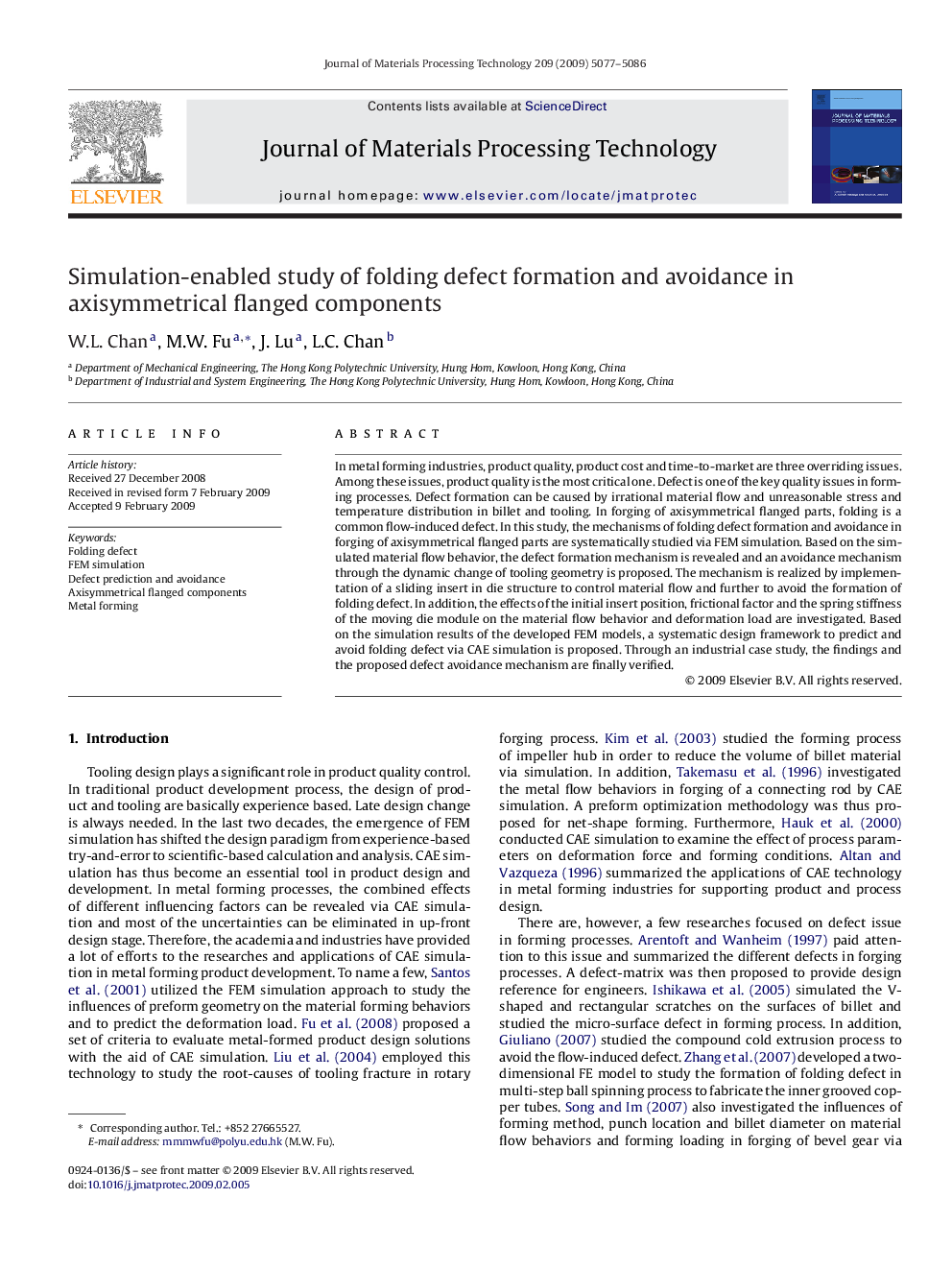| Article ID | Journal | Published Year | Pages | File Type |
|---|---|---|---|---|
| 793321 | Journal of Materials Processing Technology | 2009 | 10 Pages |
In metal forming industries, product quality, product cost and time-to-market are three overriding issues. Among these issues, product quality is the most critical one. Defect is one of the key quality issues in forming processes. Defect formation can be caused by irrational material flow and unreasonable stress and temperature distribution in billet and tooling. In forging of axisymmetrical flanged parts, folding is a common flow-induced defect. In this study, the mechanisms of folding defect formation and avoidance in forging of axisymmetrical flanged parts are systematically studied via FEM simulation. Based on the simulated material flow behavior, the defect formation mechanism is revealed and an avoidance mechanism through the dynamic change of tooling geometry is proposed. The mechanism is realized by implementation of a sliding insert in die structure to control material flow and further to avoid the formation of folding defect. In addition, the effects of the initial insert position, frictional factor and the spring stiffness of the moving die module on the material flow behavior and deformation load are investigated. Based on the simulation results of the developed FEM models, a systematic design framework to predict and avoid folding defect via CAE simulation is proposed. Through an industrial case study, the findings and the proposed defect avoidance mechanism are finally verified.
